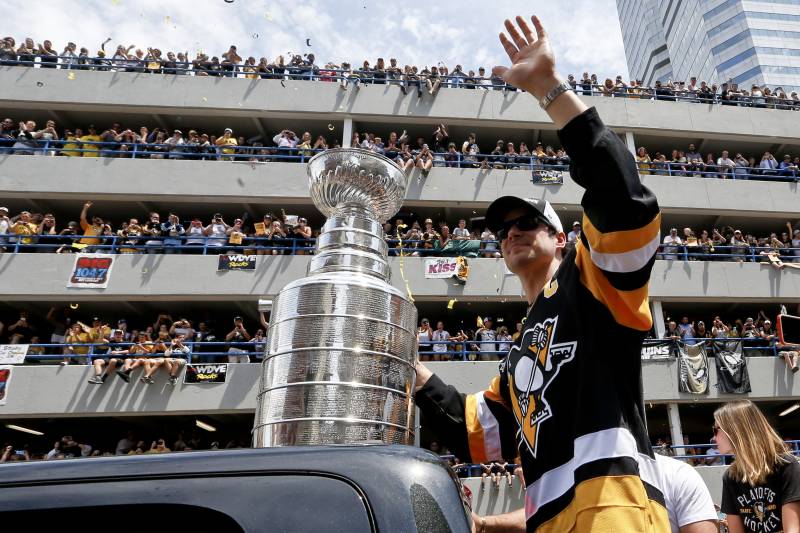By Chris Mueller
February 27, 2018
Goaltender Roberto Luongo #1 of the Florida Panthers defends the net against Patric Hornqvist #72 of the Pittsburgh Penguins at the BB&T Center on February 24, 2018 in Sunrise, Florida. (Photo by Eliot J. Schechter/NHLI via Getty Images)
Jim Rutherford didn’t make a trade that drew much attention on deadline day, but the Penguins’ general manager still managed to make a splash. Rutherford was not shy, during a post-deadline meeting with the media, when speaking about contract negotiations with Patric Hornqvist.
Rutherford indicated that the sides were close to a long-term extension, and Tuesday it was finalized, with Hornqvist getting five years at $5.3 million per year. Though no one outright criticized the deal, the most common refrain seemed to be, “smart move by the Penguins, even if the price is high and the term is too long.”
Given Hornqvist’s rugged style and what his job description as a net-front presence requires of him, injuries seem like they will be a constant companion. The contract will take him into his mid-30s, and it isn’t crazy to suggest that he might miss significant chunks of time during multiple years.
That said, it doesn’t matter if he does. It’s almost preferable that he does, as long as he is healthy for the playoffs.
What the extension for Hornqvist shows is that Rutherford is acutely aware of what his roster is capable of this year, and for the next several seasons, at least. He knows what he’s doing, and he’s trying to maximize the team’s championship window by retaining the most important pieces. Hornqvist is the blood and guts of the Penguins roster. If Sidney Crosby and Evgeni Malkin are the team’s soul, Hornqvist is its heart.
If Phil Kessel is a sniper on the ice, Hornqvist is a plumber, willing to get dirty and do ugly work in service of getting the job done. He is an integral part of their power play and has given them the kind of net-front presence they were lacking in past playoff runs, never more so than during their humiliating Eastern Conference Finals sweep at the hands of the Bruins in 2013.
Is the contract maybe a little too rich, a little too long? Sure, if taken in a vacuum. Nothing the Penguins do right now should be viewed that way, though.
Everything Rutherford does is aimed at winning Stanley Cups. Those two years at the end of the deal might not look great on paper, and in practice might not be that pleasant, but if the Pens contend for and perhaps win another Cup or two in the next three seasons, and Hornqvist plays a significant role, it will have been well worth it.
No other team in hockey has been as fortunate in the draft as the Penguins have for the last 35 years. They’ve come up with multiple generational talents, starting with Mario Lemieux, continuing with Jaromir Jagr, and rounding out with Malkin and Crosby. The presence of that kind of talent makes championship contention an annual imperative, not something to be pursued when everything breaks correctly.
Rutherford has been aggressive about bolstering his roster even when outward appearances suggest he won’t be able to. He makes smart trades and has been in constant pursuit of titles. He knows the value that Hornqvist provides, and he was rightly willing to overpay and overcommit to it because Hornqvist’s talents are rare in the NHL and vital to the Penguins’ chances.
Sure, he might taper off significantly late in the life of this contract. He might get hurt and actually miss playoff time. The deal might look like an albatross when all is said and done. But if Patric Hornqvist performs for the first three years the way he has so far with the Penguins, and the team is a serious contender for the Cup, it won’t just be a good deal for the team, it will be a great one.
Chris Mueller is the co-host of the ‘Starkey & Mueller Show’ from 2-6 p.m. weekdays on 93.7 The Fan.



